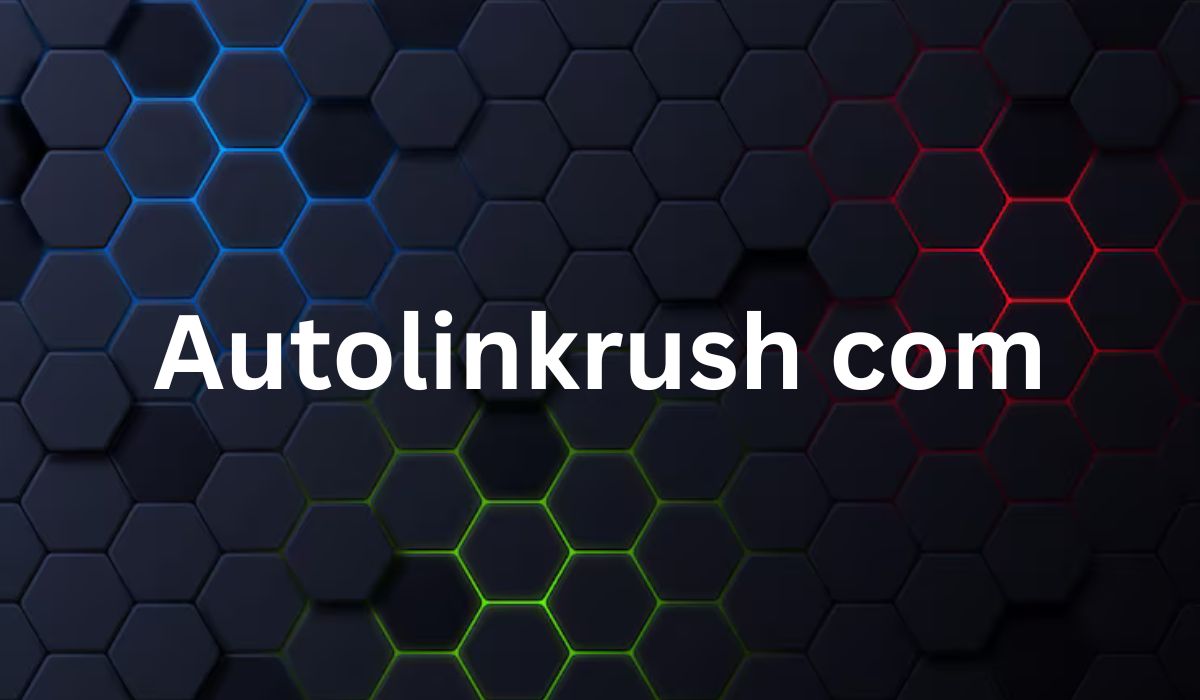In the ever-tightening race for visibility in search engines, backlinks remain one of the foundational signals that Google and others use to assess authority. But building quality links is usually laborious — outreach, guest posting, manual outreach, tracking — it can take weeks or months. Enter autolinkrush com, a tool that promises to drastically simplify and accelerate your backlink generation process. In this article, we will explore what it is, how it works, the features, pros/cons, pricing, security concerns, and best practices for using it (or deciding whether you should use it at all).
Important note / caveat: While the tool markets itself aggressively, there are red flags (including a reported hack) that merit caution. Use with awareness and always combine with safe, ethical SEO practices.
What Is autolinkrush com?
AutoLinkRush (accessible at autolinkrush com) promotes itself as a tool that can generate 1,000+ real backlinks almost instantly by pinging indexing and backlink networks. Its pitch is quite straightforward:
- You enter your target keyword + URL.
- Their engine submits your URL/keyword to multiple backlinking services (ping networks, indexing services) automatically.
- You “see backlinks generated live” within seconds.
They offer a free plan (limited number of backlinks) as well as paid upgrades for more volume, faster indexing, and enhanced source access.
On the technical front, AutoLinkRush is built on OpenResty (a web application server framework) and uses typical web technologies and mobile optimizations.
However, things aren’t entirely rosy. There are reports that the domain was hacked or defaced (by “D4LGH4CK_TM”), including changes to a file called license.txt. This raises security and trust concerns worth discussing later.
Pros, Cons, and Red Flags
Using a service like AutoLinkRush can bring short-term gains, but also serious dangers. Here’s a breakdown:
Potential Benefits
- Fast backlink volume — If the platform genuinely creates many backlinks quickly, you may see a traffic or ranking bump (especially for new or low-competition sites).
- Ease of use — Minimal setup: just enter your URL and keyword; no complex configurations.
- Free trial / free plan — Useful for testing whether it works for your site before committing.
- One-time payment options — Some packages are non-recurring, which may feel safer than ongoing subscriptions.
Risks & Drawbacks
- Quality of backlinks uncertain: Fast, automated backlink tools often produce low-quality, spammy, or irrelevant links. Such links may attract penalties from Google.
- Domain security issues: The site has been hacked/defaced (license file altered), which hints at weak security or ownership vulnerabilities.
- IP/IP sharing concerns: AutoLinkRush is hosted on IP 185.100.234.137, which is shared among dozens of domains. Having many unrelated domains on the same IP can be a red flag in SEO.
- Indexing reliability: Generating links does not guarantee they’ll be indexed by Google or other search engines.
- Risk of penalties: Google’s algorithms are increasingly strict on unnatural linking and mass link schemes.
- Limited transparency: Users often don’t know exactly where their backlinks are placed (which sites, which domains).
- Short-term effect: Gains may be fleeting and could be reversed if Google devalues those links later.
Feature Comparison Table
Here’s a comprehensive table comparing key features, strengths, and risks of AutoLinkRush versus more traditional or safer link building approaches.
| Feature / Criterion | autolinkrush com | Traditional / Manual Link Building | Recommended Best Practice |
| Ease of setup | Very easy (enter URL + keyword) | Requires outreach, negotiations, content creation | Use automation only as a supplement |
| Speed of backlink generation | Very fast, instant (claimed) | Slow (weeks to months) | Use rapid tools cautiously, rely on quality |
| Backlink quality | Uncertain, possibly low | Higher (relevance, authority) | Aim for high-relevance, niche links |
| Indexing likelihood | Variable / weak guarantee | Better (if proper linking & interlinking) | Use indexing tools or ping services |
| Risk of penalty | High risk due to possible spam links | Lower — manually vetted links | Stay within Google’s guidelines |
| Transparency | Limited — you may not see full list of link sources | Full control — you choose the sites | Log and monitor backlinks regularly |
| Cost structure | Free + one-time upgrades | Ongoing costs (content, outreach, tools) | Diversify your investment |
| Security & trust | Questionable (site was defaced) | More stable, if working through known channels | Always vet tools and platforms |
| Longevity of benefit | Often short-lived | More stable / compounding effect | Regular upkeep and content support |
This table illustrates that while AutoLinkRush offers convenience and speed, the risks and uncertainty cannot be ignored. The best approach is often a blend of methods.
How to Use AutoLinkRush Safely (If You Choose To)

If, after weighing the pros and cons, you decide to experiment with AutoLinkRush (or similar tools), follow these best practices:
- Limit usage
Don’t blow your entire link budget through one tool. Use it sparingly, perhaps for lower-priority pages or fresh content. - Diversify link sources
Combine manually earned links (guest posts, outreach, niche directories) with any automated links. - Monitor backlink profile closely
Use tools like Google Search Console, Ahrefs, or SEMrush to see which backlinks are live, which are spammy, and to disavow if necessary. - Stagger your usage
Don’t generate massive links all at once; produce smaller batches over time to appear more natural. - Use indexing boosters
Even after link creation, use legitimate indexing or ping tools to give your links visibility. - Avoid “exact match keyword” heavy linking
Mix your anchor texts — branded anchors, partial match, long tail — to reduce risk of over-optimization. - Back up your site & monitor security
Since AutoLinkRush has had a security breach, always ensure your domain and DNS are secure. - Test on non-critical pages first
Try it on new or peripheral pages rather than your main money pages until you’re confident in its safety.
Real World Observations & Community Feedback
- As mentioned earlier, AutoLinkRush was reportedly hacked/defaced with alterations to license.txt by “D4LGH4CK_TM”.
- Some blogs (e.g. “WheonCricket07”) write about AutoLinkRush’s service promises (automated link building) in generic terms.
- The domain’s hosting IP is shared among many other domains, which may reduce trust in its uniqueness or authority.
- Technically, AutoLinkRush uses standard web frameworks (OpenResty) and typical mobile- and web-compatibility setups.
Formal user reviews are somewhat scarce or anecdotal. Some SEO practitioners consider such mass-link tools risky, especially when Google emphasizes “natural linking” and relevance.
Is AutoLinkRush Worth It?
The short answer: Maybe — for testing or supplementary usage — but not as a core strategy.
If you’re an SEO beginner or running a test site, trying AutoLinkRush in small doses may give you insight into how powerful (or dangerous) such automation can be. But for any serious, long-term SEO strategy, relying on high-quality, manually vetted links will always serve you better.
Here’s a quick checklist to decide:
- Are you okay with risk of deindexing or penalty?
- Do you have a fallback (manual link building, content marketing) in place?
- Can you monitor the links closely and disavow bad ones?
- Are you treating AutoLinkRush as one tool among many, not the silver bullet?
If yes, proceed with caution. If no, you may be safer avoiding it entirely.
Sample Workflow: How You Might Use AutoLinkRush + Manual Tactics
Below is a sample workflow combining AutoLinkRush with safer methods:
- Select a low-stakes page — maybe a blog post, not your key product page.
- Run a small AutoLinkRush batch — e.g. 50–100 links, not full capacity.
- Begin manual outreach in parallel — guest posts, resource pages, niche directories.
- Measure impact over 2–4 weeks — check which links indexed, if traffic improved, if any harmful links appear.
- Disavow or remove bad links — via Google Search Console or the disavow tool.
- Continue building high-quality links — focusing more resources there if results are favorable.
By blending tactics, you hedge your risks while still exploring newer tools.
Final Thoughts & Recommendations
- autolinkrush com is a backlink automation tool that promises rapid link generation via ping and indexing services. The pitch is enticing for anyone wanting faster ranking boosts.
- However, there are significant security and SEO risks: past domain defacement, shared hosting IPs, and the general risk of spammy or unnatural backlinks.
- A side-by-side comparison shows that traditional and manual link building (though slower) often yields more sustainable, safe results.
- If you decide to try AutoLinkRush, do so cautiously: use it on non-critical pages, monitor your backlink profile, diversify anchor texts, and always have manual strategies in parallel.
- SEO is often a long game: there are no shortcuts without trade-offs. Tools like AutoLinkRush may accelerate some outcomes but can also bring unintended harm if misused.
If you like, I can also help you write a review post or compare AutoLinkRush with 3 competing backlink tools. Would you like me to draft that next?
Also Read About :- WindgustNews
